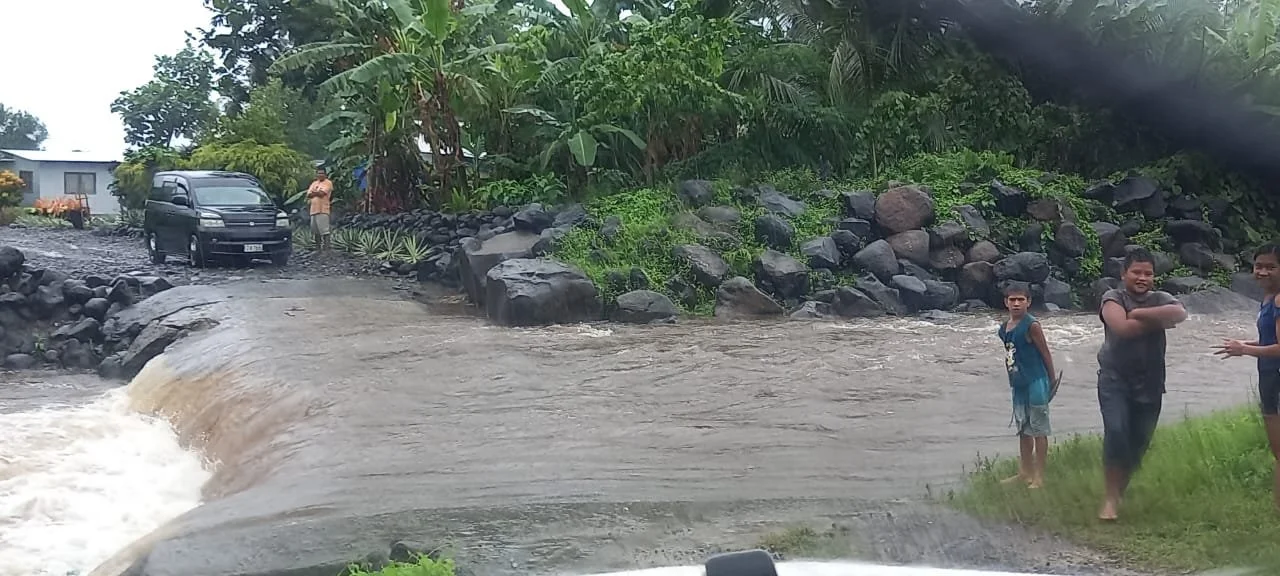Disaster Management Office Issue Warning
Heavy Downpour Causes Fords and Bridges to Close around Samoa.
Photo: Supplied
Awful weather conditions have led to roads in Apia and villages around Samoa becoming impassable on Thursday (yesterday), forcing motorists to risk driving through the flooded roads.
Roads and bridges of some villages around the country the have been destroyed due to the heavy downpour, this has prompted the Disaster Management Office of Samoa to issue a statement advising citizens of Samoa on Thursday afternoon to refrain from crossing any flooded area, and not to cross bridges in the vicinity of ivers as it might endanger their lives.
At the village of Uafato for instance, the bridge there has been severely damaged due to flooding on Thursday. The crossing behind Frankie's Supermarket at Lelata (Ueligitone area) has also been deemed by the Disaster Management Office as unsafe to cross. The bridge in Moamoa has also been damaged due to the heavy rain.
The country has also been advised by the Meteorological Office to remain alert while the authorities continue to monitor a broad convective cloud band slowly descending over Samoa. These dreadful weather conditions triggered an upgrade of the previous Heavy Rain Advisory to Flood Advisory level.
According to the M.E.T. advisory, the potential impacts will include heavy downpours with poor visibility and strong gusty winds, foggy and slippery roads over mountain passes and ranges, pooling near roadsides and waterways. Other potential impacts include river overflows , flooding,and possible landslides.
The Chief Executive Officer of the Samoa Meteorology Services, Luteru Agaalii Tuvale, in an interview with Eyespy Radio Station said that there is no need to panic but members of the public need to be aware of strong winds and possible flooding in vulnerable areas, and also adhere to warnings issued out by D.M.O, N.E.O.C and the authorities.


